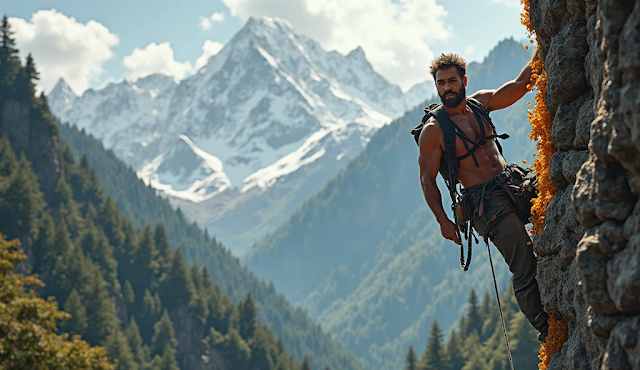Despite a "Reconsider Travel" advisory from the U.S. State Department, nearly 10,000 American tourists chose to visit Nepal in September 2025-
To help you understand the situation, the table below breaks down the key statistics behind this story.
| Aspect | Details |
|---|---|
| Total Int. Tourists (Sept 2025) | 78,711-1-2 |
| U.S. Tourist Arrivals | 9,679 (2nd highest source market)-1-2 |
| Year-on-Year Change (U.S.) | Decrease from 10,084 in Sept 2024-2 |
| Month-on-Month Change (U.S.) | Increase of 3,611 from August 2025-2 |
| Top Source Market | India (15,556 arrivals)-1-2 |
| U.S. Travel Advisory Level | Level 3: Reconsider Travel (issued Sept 11, 2025)-6 |
🏔️ The Allure of Nepal: More Than the Mountains
The significant number of U.S. visitors, despite official warnings, speaks volumes about what Nepal has to offer.
- A Cultural Calling: For many Nepali Americans, the timing of their visit was tied to the Hindu festival of Dashain, one of the most important celebrations in Nepal-2. This suggests that for a substantial portion of visitors, the trip was a non-negotiable cultural or family obligation. Furthermore, many other travelers had simply made pre-booked plans and chose not to cancel them-2.
- The Unchanged Experience: Beyond the political unrest in specific urban centers, the core attractions of Nepal remained untouched. The trekking routes in the Himalayas, including Everest Base Camp and the Annapurna Circuit, were fully accessible, and cultural landmarks across the country were open to visitors-3. The protests were directed at domestic political issues, and there was no anti-tourist sentiment-35.
🤝 The People's Promise: Safety and Hospitality
A remarkable aspect of Nepal's response to the tourism crisis was the grassroots effort to reassure the world.
- A Social Media Reassurance Campaign: Nepali citizens took to platforms like Instagram and X (formerly Twitter) to spread a message of safety and welcome. One viral post perfectly captured this sentiment: "We might be poor with money but rich in love for our guests. No tourist will be bothered in our beautiful country, ever."-5. The popular account "Routine of Nepal Banda" also shared images of tourists enjoying their trips, appealing to the world to visit-5.
- Official Support for Stranded Tourists: The Nepal Tourism Board implemented a practical measure to support tourists affected by the unrest, offering free visa renewals for those whose documents expired during the peak of the protests-5. This proactive step demonstrated the government's commitment to tourist welfare.
- Industry Resilience: On the ground, the tourism industry worked hard to maintain operations. Travel agents reported normal business activities, and popular destinations like the Pashupatinath temple continued to welcome visitors without issue-5. Testimonials from international travelers already in Nepal, like a tourist from England, confirmed that they felt safe and were able to continue their planned activities after checking with local contacts-5.
🌆 Understanding the Context: The September Unrest
To fully grasp the situation, it's important to understand the events that triggered the travel advisories.
- The Gen Z Protests: In early September 2025, Nepal experienced a significant youth-led movement protesting issues like corruption, governance, and unemployment-3. What began as peaceful demonstrations turned violent, resulting in tragic deaths, injuries, and significant damage to properties, including some hotels-37.
- The Economic Blow to Tourism: The unrest struck a heavy blow to a sector that was just recovering from the COVID-19 pandemic-3. The Hotel Association of Nepal (HAN) reported damages worth Rs. 25 billion, with over two dozen hotels temporarily out of operation-3. Perhaps more devastatingly, the country saw a wave of tourist cancellations for the critical autumn season, with Pokhara reportedly seeing up to 40% of hotel bookings for October-December canceled-7.
🛡️ Traveling to Nepal: A Practical Outlook
If you are considering a trip to Nepal, being informed is key to a safe and rewarding experience.
- Heed the Advisories, But Understand the Reality: The U.S. Level 3 advisory is in place due to "civil unrest" and the potential for further protests with little warning-6. It highlights that emergency services have a limited response capacity-6. It is crucial to take this official guidance seriously.
- Plan and Prepare Thoroughly: The U.S. State Department strongly recommends that travelers purchase comprehensive travel insurance that covers medical evacuation, trip cancellation, and other emergencies-26. You should also keep in close contact with your airline and tour operator for the latest updates-6.
- See Beyond the Headlines: Remember that the protests were politically motivated and not targeted at tourists-3. The areas most affected were specific government zones in Kathmandu and Pokhara, while trekking routes and many cultural sites in other regions were far removed from the turmoil-3.
The story of 10,000 Americans visiting Nepal in a single month is a powerful reminder of the deep connection between a country and its visitors. It underscores that while governments must err on the side of caution, individual travelers often make decisions based on a broader set of factors, including personal connections, trusted local advice, and the unwavering reputation of a destination's hospitality.
I hope this gives you a clearer picture for your blog article. Would you like to explore specific aspects, such as the details of the government's relief packages for the tourism industry or more traveler testimonials?






0 Comments